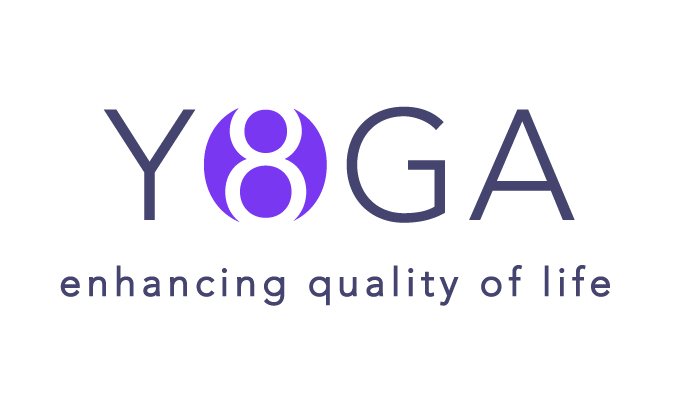People who are new to the studio are often curious about where the name Yoga8 comes from. So we thought we’d share an overview of the inspiration behind our name.
First, a quick history lesson. The practice of yoga has been around for a long time, more than 4,000-5,000 years. In the early days, knowledge was passed down from teacher to student orally, by memorizing verses and poems. Then eventually, a sage named Patanjali wrote down what we now know as the 8 limbs of yoga.
Hence the name Yoga8. When you come practice with us, you’ll not only get a great workout. You’ll also learn techniques to improve both your mental and physical wellbeing. Because yoga is about much more than just doing chaturangas (yogi push-ups) or touching your toes. It’s a set of guidelines for how to treat yourself—and the people around you. Basically, it’s a way of living. When you practice all 8 limbs of yoga, you’re well on your way to a more meaningful, purposeful life.
Here are the 8 limbs, in a nutshell.
1. Yamas: Ethical standards
The yamas are best practices for how to treat others. These include:
Ahimsa (non-harming)
Satya (truthfulness)
Asteya (non-stealing)
Bramarcharya (balance + moderation)
Aparigraha (non-possessiveness)
2. Niyamas: Self-disciplines
The niyamas are guidelines for personal discipline. These include:
Saucha (cleanliness of the mind and body)
Santosa (contentment)
Tapas (purifying heat)
Svadhyaya (self-study)
Iswara pranidhana (surrender to God)
3. Asana: Poses
When most people think of yoga, this is what they tend to think of first. Asanas are a series of physical poses that can help develop your strength, flexibility, and balance. Some are even designed just to help you relax or meditate. These include everything from adho mukha svanasana (downward-facing dog) all the way through virabhadrasana III (warrior 3).
4. Pranayama: Breath control
Pranayama exercises involve controlling your breath, everything from simply matching the length of your inhales and exhales to doing one of our favorites here at the studio: breath of fire. Breathing exercises are a great way to calm and cleanse your body and mind.
5. Pratyahara: Sense withdrawal
Pratyahara is commonly translated as “withdrawal of the senses.” This is an internal practice where you learn to detach from your external senses as well as any internal emotions that take away from the stillness of your mind.
6. Dharana: Focused concentration
Dharana means fixing your attention onto a single spot. It could be something external (like a flickering flame), or something internal (like your breathing or a silent mantra). When you have mastered dharana without any effort, then you’re meditating, which brings us to the next limb.
7. Dhyana: Meditation
Closely related to dharana, dhyana is the meditation limb of yoga. This is where you’re able to consistently and effortlessly focus your attention on a point, object, or idea. Meditation is a great way to work through difficult emotions, improve memory and attention, and much more. It’s also the prelude to limb number 8.
8. Samadhi: Bliss
That moment at the end of yoga class where you feel completely relaxed and content—that’s samadhi. It’s the final stage of yoga, where you’ve done such a great job clearing your mind and meditating that you experience a state of bliss. You can’t really practice samadhi on its own, as it comes up spontaneously as you work through the other 8 limbs.
Hopefully this gives you a better idea of what all is behind the practice of yoga—and what’s behind the name of Yoga8! We hope you come join us on our journey through the 8 limbs.
See you at the studio.


